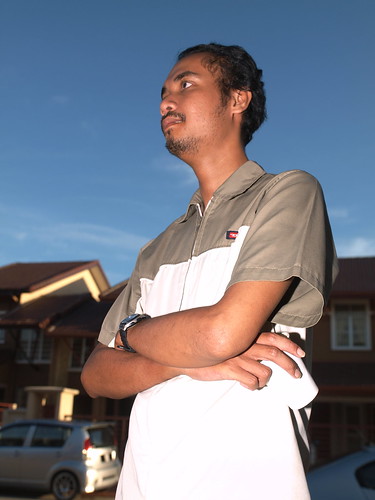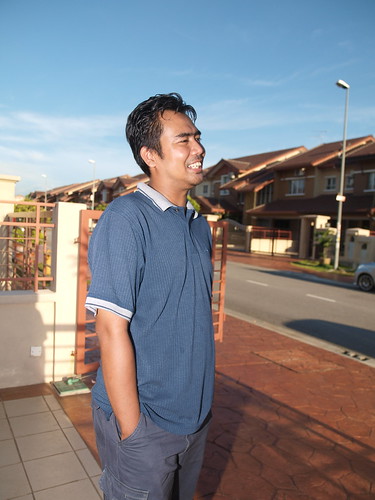Shooting with flash in bright sunlight is very important. With the correct balance between the sunlight and flash power, beautiful images can be created with minimum shadow harshness.
One of the problem with DSLR shooting outdoors with flash is the use of the focal-plane shutter. This archaic design is the bane of modern photography, and should be banned, in my opinion. But, the strength of this design compared to current modern design is still valid, though. With focal-plane (FP) shutter, very fast speeds up to 1/8000s is possible. Modern leaf shutter can only go up to 1/2000s which is evident in current point-and-shoot digicams.
With focal plane shutter, there are 2 mechanisms being used to control exposure.
For lower shutter speed, the exposure is done instanteneously throughout the frame; thus, there are no issues to sync with the flash. In olden cameras, fastest sync speed were typically 1/125s. Nowadays, most modern DSLRs have sync up to even 1/500s. Typical sync speeds are 1/180s to 1/250s.
For shutter speeds higher than the sync speed, the DSLR controls shutter exposure differently. Instead of exposing the whole frame in one moment, the shutter moves from one end of the frame to the other end of the frame creating a stroboscopic sweep of exposure. Now, here lies the problem... In order to sync with higher shutter speed, the flash needs to have FP Flash support. If not, only part of the frame will be exposed with the flash as the stroboscopic sweep is not in-sync with the flash burst.
Normal TTL flash uses impulse response upon trigger, with the flash emitting the maximum power set by the camera. It only lasts for a few microseconds. It does not need high sync accuracy; hence, the speed limitation.
FP TTL flash, an invention of Olympus back in 1986, uses step response upon trigger. The burst is set to low power but longer duration, maybe 50-100x longer than Normal TTL. With the longer burst, it is possible for the shutter sweep to be illuminated throughout the frame; thus, achieving accurately exposed image.

E-3 with Zuiko Digital ED14-35mm F2.0 SWD & FL-50R
21mm, f/3.5, 1/800s, ISO100, -1.3EV, FP Flash +2EV
In this image, I manage to get a balance between the sky and subject. Usually the camera will over-expose the sky to white to get the subject bright enough. In this case, I override by -1.3EV so that it's enough to render the sky strong blue. In order to compensate for the loss of exposure to the subject, I override the flash power to +2.0EV. Overall balance is flash +0.7EV over sunlight. In this instance, I will get a darkened effect rather than natural exposure.
Notice the shutter speed is 1/800s, which is way off E-3s 1/250s flash sync. FP Flash technology made it possible. If not, there will be two situations: white sky with nice subject, or blue sky with silhoutte subject.
Two more samples at different apertures for different Depth-of-Field.


No comments:
Post a Comment